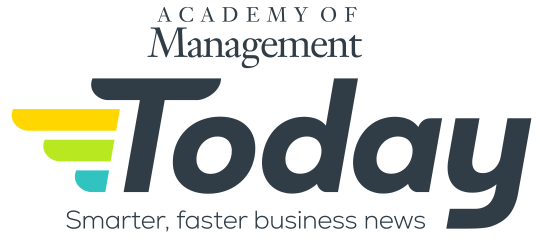Published on: July 8, 2025 at 3:51 pm
Organizations habitually overlook readily available opportunities to boost long-term financial performance, downsizing and outsourcing in futile attempts to shrink their way to profit, while destroying their organizational culture and reducing their talent pool. Managers who take seriously the adage that “people are the most important asset” can tap into enduring sources of competitive advantage, according to Academy of Management Scholars Jeffrey Pfeffer of Stanford University and John F. Veiga of the University of Connecticut. They offer seven tips for leaders to optimize their organization’s systems that produce profits through people.

Source: Shutterstock
1. Instill a sense of employment security
Employment assurances provide many benefits, including maximizing workers’ contribution of knowledge and efforts to enhance productivity. Laying off employees too quickly at the first sign of financial difficulty is a waste of resources, especially for organizations that have done a good job selecting, training, and developing their workforce, because layoffs put important strategic assets on the street for the competition to employ.
Source: Shutterstock
2. Establish and abide by a selective hiring process
The organizations need to be clear about what are the most critical skills and attributes that applicants need to have. Managers need tocarefully consider those qualities in the context of the particular job requirements and the organizational approach to achieving strategic objectives. Screen to recruit candidates with important attributes that are difficult to change through training, emphasizing qualities that separate the wheat from the chaff, rather than going on gut feelings after conducting job interviews.
Source: Shutterstock
3. Design decentralized, self-managed teams
A team-based structure substitutes peer-based control for hierarchical control of work, encouraging people across the entire organization to feel accountable and responsible for the operation and success of the enterprise. This increased sense of responsibility stimulates more initiative and effort and permits the removal of layers of middle management, reducing the enormous costs of having people whose sole job it is to watch people who watch other people do the work.
Source: Shutterstock
4. Offer comparatively high compensation contingent on organizational performance
High pay can produce economic success by attracting and retaining the best and brightest.Contingent compensation may include gain sharing, profit sharing, stock ownership, pay for skill, or various forms of individual or team incentives and bonuses.
Source: Shutterstock
5. Offer extensive employee training on a consistent schedule
Too few organizations invest in improving employees’ knowledge and developing their skills.Training is an essential component of high-performance work systems to equip employees with theabilities to identify and resolve problems, initiate improvements, and take responsibility for ensuring high quality. Effective training at regular intervals can be a source of competitive advantage.
Source: Shutterstock
6. Reduce status differences between personnel
To help make all organizational members feel valued and committed, effective management systems attempt to reduce the status distinctions that separate individuals across various teams and departments and cause some to feel less important. Tapping into the ideas, skills, and efforts of all staffcan be accomplished both symbolically through the use of egalitarian language and labels, physical space, and attire,and substantively by reducing the organization’s degree of wage inequality.
Source: Shutterstock
7. Share information across the organization
The sharing of data related to financial performance, strategy, and operational measures conveys to the organization’s personnel that the leadership team trusts them.Even highly motivated and well-trained workers can’t contribute to enhancing organizational performance if they don’t have sufficient information about important dimensions of performance and training, as well as how to interpret that information and apply it to their roles and responsibilities.
Author
-

Daniel Butcher is a writer and the Managing Editor of AOM Today at the Academy of Management (AOM). Previously, he was a writer and the Finance Editor for Strategic Finance magazine and Management Accounting Quarterly, a scholarly journal, at the Institute of Management Accountants (IMA). Prior to that, he worked as a writer/editor at The Financial Times, including daily FT sister publications Ignites and FundFire, as well as Crain Communications’s InvestmentNews and Crain’s Wealth, eFinancialCareers, and Arizent’s Financial Planning, Re:Invent|Wealth, On Wall Street, Bank Investment Consultant, and Money Management Executive. He earned his bachelor’s degree from the University of Colorado Boulder and his master’s degree from New York University. You can reach him at [email protected] or via LinkedIn.
View all posts











